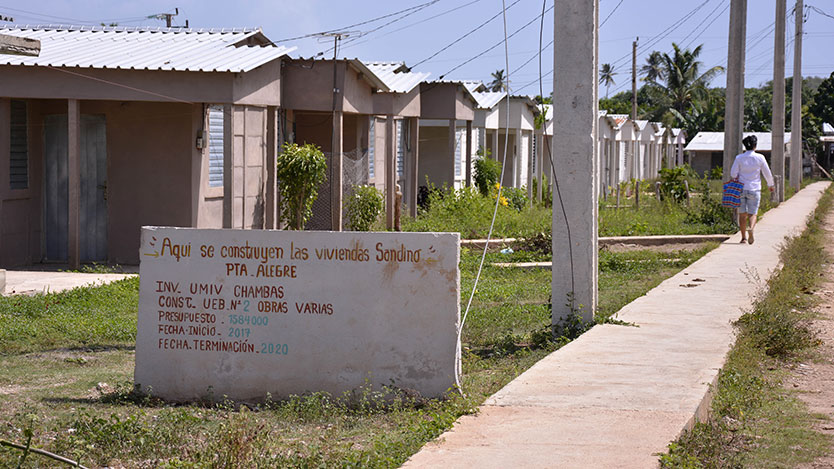The 2022 year closed with 946 completed homes and the figure again fell below expectations by 54.5 percent, illustrating, incidentally, a "sequence" of defaults that dates back to 2021, when this province barely raised 560 houses and remained at 35.2 percent of their plans. Very distant from the 1,300 that we built in 2020.

Therefore, in this newspaper we squeeze the decimals out of the 2021 figure, trying to account for each effort and work in progress, affected by the deficit of resources that would have long-term implications.
"The worst is yet to come. The start and development is critical, we are going to finish the construction sequence”, Leiter Méndez Valdivia, deputy director general of the Provincial Housing Directorate (DPV), predicted in mid-2021.
In addition, he was not mistaken: in 2022 almost no new homes were started, "we dedicated ourselves to finish the ones started with the little that was coming in," he now maintains.
That would be just over 700 homes, which were in completion at the end of 2021, Ernesto Herrera Pérez, deputy technical director of the DPV, confirmed.
Therefore, if 946 were completed in 2022, certainly, little was raised from scratch and the most worrying thing is that "we are once again critical in the sequence, even though there is already talk of some 1,400 homes in the 2023 plan" Leiter says.
However, in their favor they have that the current energy situation is far from the past levels of affectation that limited, above all, the production of aggregates. According to Méndez Valdivia, that was one of the biggest setbacks. "Either there were no aggregates because the mill was stopped by current, or there was no fuel to transport it, or there were no explosives to exploit the quarry." It would be a series of events that included the production of steel and the entry of cement.
“For example, the P250 and the P350, which have resistance and can be used in the foundry, did not enter, and in exchange a little more of the PZ entered, which is used in building and plastering, but since they do not have the other, well, no we could start. That hit us a lot ”, the manager reiterates.
Even so, it was a year where 283 homes were built on the state highway, which represented 44 percent of that purpose; 196 subsidies, for a 26 percent execution; and 467 due to their own effort, which raised the over-compliance of this section to 134 percent.
These disparities, by municipalities, also denote other realities. In Morón, for example, 41 percent of the state houses in the territory were built; while the subsidies had their maximum expression in Chambas with only 39 dwellings. The own effort, however, showed a greater presence in the main city, where 31 percent was executed.
Beyond the "logical" differences -according to needs, resources and the real power of the construction forces-, the greatest debt continues to be with the total landslides left by Hurricane Irma in 2017. Five years later, of the 4,231 landslides in total, some 900 families are still homeless (20 percent of the victims). More than 500 in Chambas and more than 300 in Bolivia.
That is where future plans are headed, knowing that now, with delays in the construction sequence, they look more improbable, unless the delivery of resources increases. That is still not in the plans.
Until today, the only thing that is certain is that the damages had an impact on a national scale, aggravated by Hurricane Ian. So much so that, in mid-December, national forecasts indicated 58 percent compliance in the housing construction plan in the country. Moreover, since July, Ciego de Ávila appeared together with six other provinces among the non-compliant ones.




